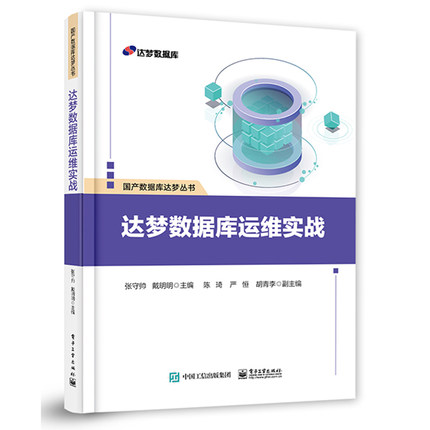From: https://cn.wikipedia.org/wiki/Oracle_Database
Oracle Database release numbering has used the following codes:
| Oracle Database Version |
Initial Release Version |
Initial Release Date |
Terminal Patchset / RU Version |
Terminal Patchset / RU Date |
Marquee Features |
|---|---|---|---|---|---|
| Oracle v2 | 2.3 | 1979 | First commercially available SQL-based RDBMS implementing some basic SQL queries and simple joins[8] | ||
| Oracle v3 | 3.1.3 | 1983 | Concurrency control, data distribution, and scalability | ||
| Oracle v4 | 4.1.4.0 | 1984 | 4.1.4.4 | Multiversion read consistency. First version available for MS-DOS.[9][10] | |
| Oracle v5 | 5.0.22 (5.1.17) | 1985 | 5.1.22 | Support for client/server computing and distributed database systems. First version available for OS/2.[11] | |
| Oracle v6 | 6.0.17 | 1988 | 6.0.37 | Row-level locking, scalability, online backup and recovery, PL/SQL. First version available for Novell Netware 386.[12] | |
| Oracle 6.2 | 6.2.0 | Oracle Parallel Server | |||
| Oracle7 | 7.0.12 | June 1992 | PL/SQL stored procedures, Triggers, Distributed 2-phase commit, Shared Cursors, Cost-Based Optimizer | ||
| Oracle 7.1 | 7.1.0 | May 1994 | Parallel SQL Execution. First version available for Windows NT.[13] | ||
| Oracle 7.2 | 7.2.0 | May 1995 | Shared Server, XA Transactions, Transparent Application Failover | ||
| Oracle 7.3 | 7.3.0 | February 1996 | 7.3.4 | Object-relational database | |
| Oracle8 Database | 8.0.3 | June 1997 | 8.0.6 | Recovery Manager, Partitioning. First version available for Linux.[14] | |
| Oracle8i Database | 8.1.5.0 | 1998 | 8.1.7.4 | August 2000 | Native internet protocols and Java, Virtual Private Database |
| Oracle9i Database | 9.0.1.0 | 2001 | 9.0.1.5 | December 2003 | Oracle Real Application Clusters (RAC), Oracle XML DB |
| Oracle9i Database Release 2 | 9.2.0.1 | 2002 | 9.2.0.8 | April 2007 | Advanced Queuing, Data Mining, Streams, Logical Standby |
| Oracle Database 10g Release 1 | 10.1.0.2 | 2003 | 10.1.0.5 | February 2006 | Automated Database Management, Automatic Database Diagnostic Monitor, Grid infrastructure, Oracle ASM, Flashback Database |
| Oracle Database 10g Release 2 | 10.2.0.1 | July 2005[15] | 10.2.0.5 | April 2010 | Real Application Testing, Database Vault, Online Indexing, Advanced Compression, Data Guard Fast-Start Failover, Transparent Data Encryption |
| Oracle Database 11g Release 1 | 11.1.0.6 | September 2007 | 11.1.0.7 | September 2008 | Active Data Guard, Secure Files, Exadata |
| Oracle Database 11g Release 2 | 11.2.0.1 | September 2009[16] | 11.2.0.4 | August 2013 | Edition-Based Redefinition, Data Redaction, Hybrid Columnar Compression, Cluster File System, Golden Gate Replication, Database Appliance |
| Oracle Database 12c Release 1 | 12.1.0.1 | July 2013[17] | 12.1.0.2 | July 2014 | Multitenant architecture, In-Memory Column Store, Native JSON, SQL Pattern Matching, Database Cloud Service |
| Oracle Database 12c Release 2 | 12.2.0.1 | August 2016 (cloud) March 2017 (on-prem) |
12.2.0.1 | March 2017 | Native Sharding, Zero Data Loss Recovery Appliance, Exadata Cloud Service, Cloud at Customer |
| Oracle Database 18c | 18.1.0 // 12.2.0.2 | February 2018 (cloud, Exadata)[18] July 2018 (other)[19] |
18.17.0 | January 2022 | Polymorphic Table Functions, Active Directory Integration, Transparent Application Continuity, Approximate Top-N Query Processing, PDB Snapshot Carousel, Online Merging of Partitions and Subpartitions |
| Oracle Database 19c | 19.1.0 // 12.2.0.3 | February 2019 (Exadata)[20] April 2019 (Linux)[21] June 2019 (cloud) |
Active Data Guard DML Redirection, Automatic Index Creation, Real-Time Statistics Maintenance, SQL Queries on Object Stores, In-Memory for IoT Data Streams, Hybrid Partitioned Tables, Automatic SQL Plan Management, SQL Quarantine, Zero-Downtime Grid Infrastructure Patching, Finer-Granularity Supplemental Logging, Automated PDB Relocation | ||
| Oracle Database 21c | 21.1.0 | December 2020 (cloud)[22] August 2021 (Linux)[23] |
Blockchain Tables, Multilingual Engine - JavaScript Execution in the Database, Binary JSON Data Type, Per-PDB Data Guard Physical Standby (aka Multitenant Data Guard), Per-PDB GoldenGate Change Capture, Self-Managing In-Memory, In-Memory Hybrid Columnar Scan, In-Memory Vector Joins with SIMD, Sharding Advisor Tool, Property Graph Visualization Studio, Automatic Materialized Views, Automatic Zone Maps, SQL Macros, Gradual Password Rollover | ||
|
Legend:
Old version
Older version, still maintained
Latest version
|
|||||
The Introduction to Oracle Database includes a brief history on some of the key innovations introduced with each major release of Oracle Database.
See My Oracle Support (MOS) note Release Schedule of Current Database Releases (Doc ID 742060.1) for the current Oracle Database releases and their patching end dates.







